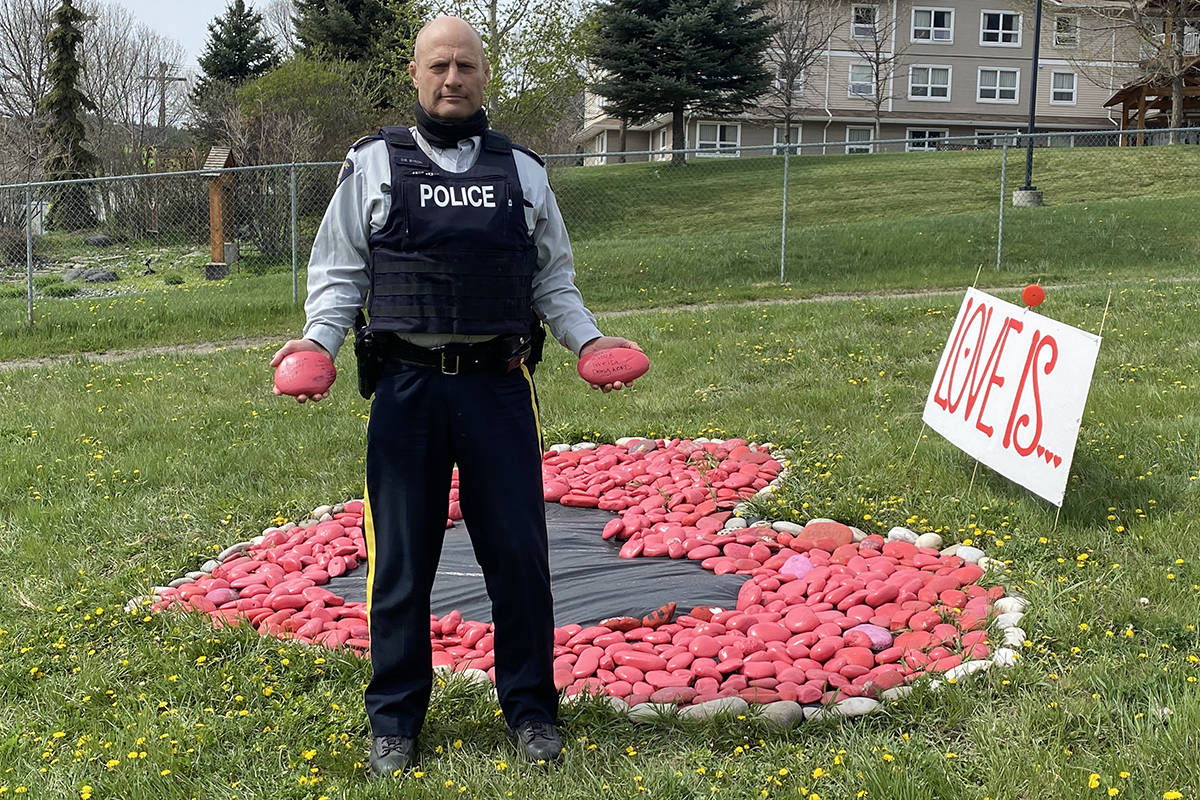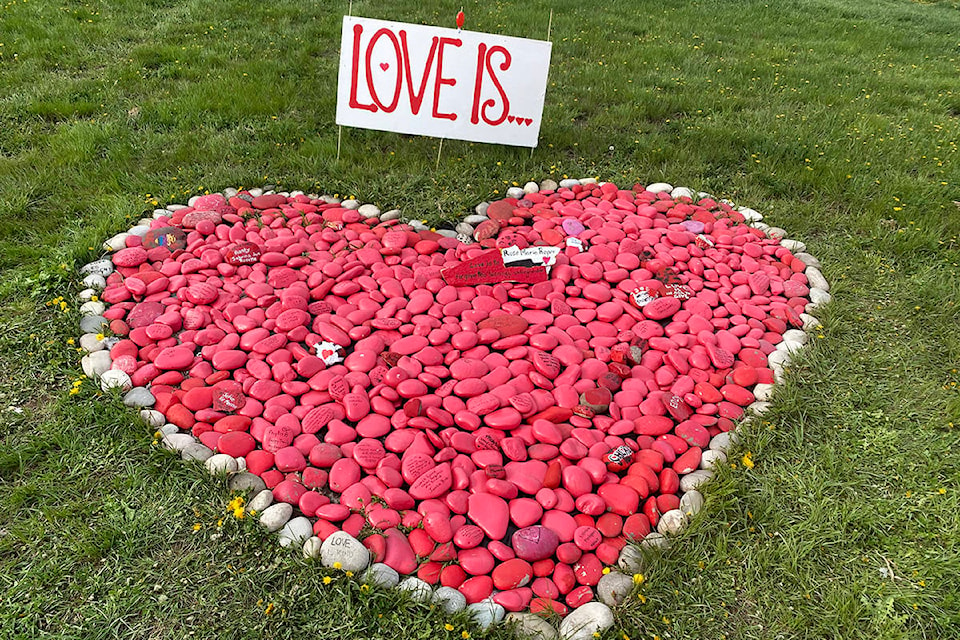New, freshly painted red rocks fill in the heart-shaped outline set in the green grass along Oliver Street in Williams Lake Wednesday, May 5.
The names of local Indigenous women, such as Rose Marie Roper who was brutally murdered in Williams Lake in 1967, and Jackie Bob who went missing while mushroom picking in July 2004, and handwritten notes “Always loved never forgotten” and “Love is to forgive the seemingly unforgivable” were scrawled on the rocks and left as a reminder of the pain still carried by many.
The Cariboo Friendship Centre, whose staff hung red dresses outside their building, had invited the public to recognize the National Day for Missing and Murdered Indigenous Women and Girls in Williams Lake May 5 by writing the name of a missing or murdered Indigenous woman or girl, or what love is to them, on the rocks later placed at the Red Rock Garden at the Purple House at 624 Oliver Street.
Williams Lake RCMP Staff Sgt. Del Byron, operations officer of the Williams Lake detachment, took time himself to place two red rocks at the site.
“RCMP Indigenous reconciliation is a central theme of this year’s RCMP annual work plan,” Byron told the Tribune.
“We as the RCMP are working very hard to improve our relationships with the many Indigenous leaders and communities both locally in Williams Lake and nationally.”
Byron noted Williams Lake is the birthplace of the Highway of Tears with the murder of Gloria Moody in 1969. He said sexual exploitation and human trafficking of Indigenous women continues to this day.
According to the Assembly of First Nations (AFN), Indigenous women make up 16 per cent of all female homicide victims, and 11 per cent of missing women, even though Indigenous people make up 4.3 per cent of the population of Canada.
AFN notes that violence against Indigenous women and girls is systemic and a national crisis that requires urgent, informed and collaborative action. Indigenous women are three times more likely than non-Indigenous women to be victims of violence.
AFN believes current public data on MMIWG oversimplifies and under-represents the scale of the issue, yet still demonstrates a complex and pervasive pattern of violence against Indigenous women and girls who are often targeted because of their gender and Indigenous identity.
The 2014 RCMP Operational Overview notes that police recorded 1,017 incidents of Aboriginal female homicides between 1980 and 2012 and 164 missing Aboriginal female investigations dating back to 1952. There have been a number of reports indicating numbers are significantly higher, notes AFN
From 2001 to 2014 the average rate of homicides involving Indigenous female victims was four times higher than that of homicides involving non-Indigenous female victims.
Through resolution and the direction of First Nations, the AFN has been mandated to address the critical situation of violence, disappearance, and murder of First Nations women and girls.
It has been 11 years since Métis artist Jaime Black created the first REDress public art installation at the University of Winnipeg to honour Canada’s First Nations, Métis and Inuit #MMIWG women. We honour you Jaime and thank you. https://t.co/XZhf9dnIqo
— Lorraine Whitman (@LWhitman_NWAC) May 5, 2021
Read More:Red Dress Day honours Canada’s missing and murdered Indigenous people

